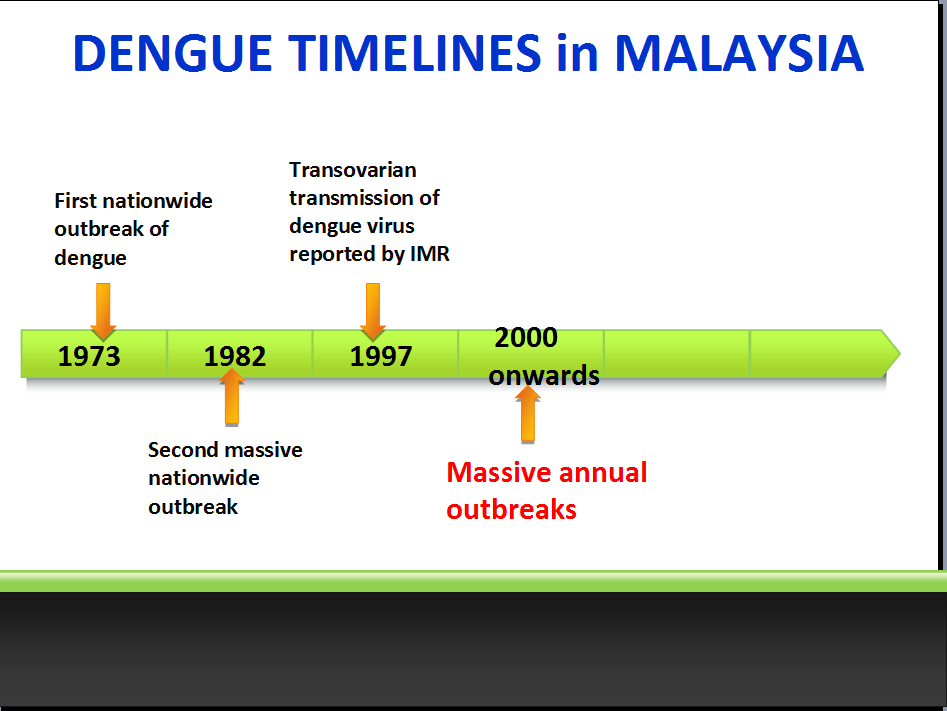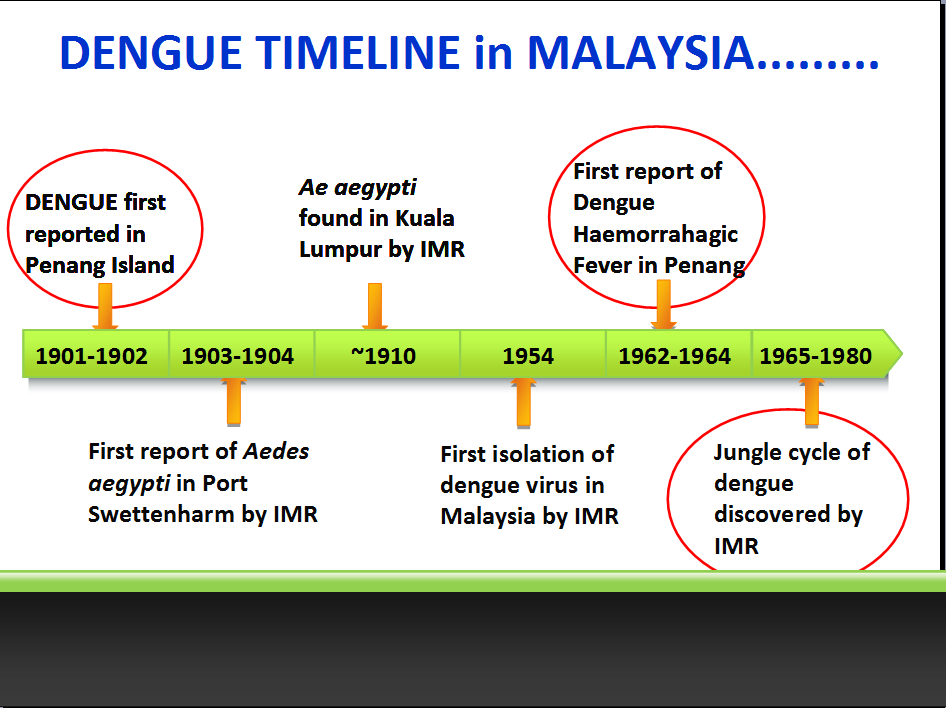Dengue Scenario in Malaysia

17 Jan 2017
Aedes aegypti (Linnaeus, 1762) is not indigenous to Malaysia. It is believed to originate from Tropical Africa and to have been introduced to Malaysia via India at the turn of the 20th century (Smith, 1956). On the other hand, Aedes albopictus (Skuse, 1894) is native to Southeast Asia including Malaysia. Both species are prolific breeders in artificial containers and are vectors of human arboviruses, such as dengue, Zika, yellow fever, chikungunya etc.
Aedes aegypti is the primary vector for dengue (Rudnick, 1986). Aedes albopictus has also been recognized as a secondary vector and is important in the maintenance of dengue and chikungunya viruses in places where Aedes aegypti is absent or not well established (Pant & Self, 1999).
In recent years, dengue outbreaks have attained epidemic proportions, causing significant public health impact by causing high morbidity and mortality. Presently dengue is the most rapidly spreading vector borne arbovirus infection globally, with transmission occurring in at least 128 countries and almost 4 billion people are at risk. The number of dengue cases reported to WHO has increased steadily from an average of less than a thousand cases per year globally in the 1950s to more than 3 million cases in 2013. Dengue is practically the only serious arbovirus in Malaysia, with 120, 836 dengue cases and 336 deaths reported in 2015 (MOH, 2016).
The virus that causes dengue and dengue hemorrhagic fever is an arthropod-borne virus (arbovirus) with four antigenically distinct serotypes (DEN-1, DEN 2, DEN 3 and DEN 4) that offer no long-term cross-protective immunity against each other. All 4 serotypes are endemic to Malaysia. Recently DEN 1, DEN-2 and DEN-3 are the dominant circulating serotypes in the country.



Comments are closed.